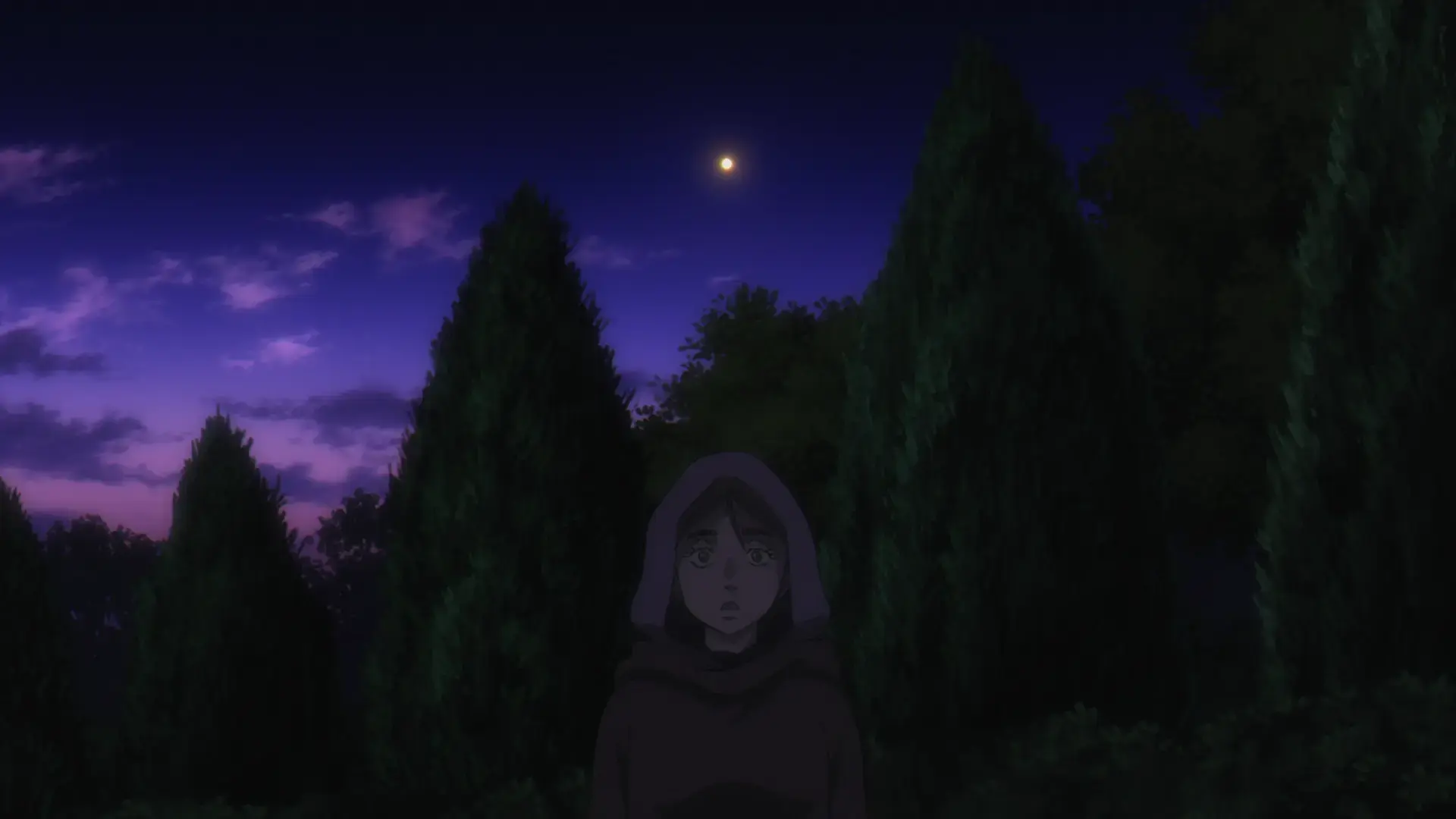I am going to keep this post relatively short this week as I have been doing a lot of traveling and am super exhausted. However, there are a couple things I wanted to point out. As for the story, it seems Jolenta is on a collision course with the church now. The point at which Nowak is asked to torture his daughter grows ever closer (I am guessing). However, this episode bears lots of historical parallels that I wanted to draw attention to.
- Venus
This is super quick, but I just like this shot of Jolenta after her conversation with Piast. We can clearly see Venus in the sky above her. We know it's Venus both because of the color and because of its low position in the sky at dusk. Venus never gets very far from the sun in the sky from Earth's perspective, so the only time you can see it is either just before the sun rises or just after it sets. Once you know how to spot Venus, it is actually quite bright in the sky. @rikka@ani.social

This is one of the philosophers with the silly models that Badeni mentioned (the other was Aristarchus, which I discussed in the Episode 1 thread). I wasn't familiar with this one, so after looking it up, his model is quite silly. It was not based on observational data at all really, but rather just based on philosophical arguments about what is higher up than other things. For instance, Mt. Olympus had a place at the foot of the central fire in his model. It also included a planet that was directly opposite the central fire from the earth called Counter-Earth. This was included simply to make a nice round number of 10 heavenly bodies.
Piast is clearly heavily influenced by the real life astronomer Tycho Brahe. I have written about Brahe in multiple discussion threads up to this point because it is basically impossible to talk about astronomy of this time period and not mention it. A short summary of Brahe's bio:
- Brahe was born in a noble house and educated in law. However, while at university, he developed an interest in astronomy and wanted to pursue it.
- Brahe was sent on a trip by his family in order to dispel him of the notion of studying astronomy. This did not work, and he ended up working with a distant relative to pursue astronomy instead.
- As a young man, Brahe observed a Great Conjunction, but the predicted time/date it happened was off by a day using the existing Ptolemaic models. This led him down the path of collecting data to improve the models.
- Brahe collected decades of astronomical observations that were more complete and more precise than anything that had existed before. The finest set of astronomical data that would exist prior to widespread usage of the telescope.
- In the final years of his life, he collaborated with a young, upstart mathematician, Johannes Kepler, who would later go on to provide a much improved model of the cosmos using Brahe's collected observations...with the sun at the center.
Anything in there sound familiar? Hmm?

